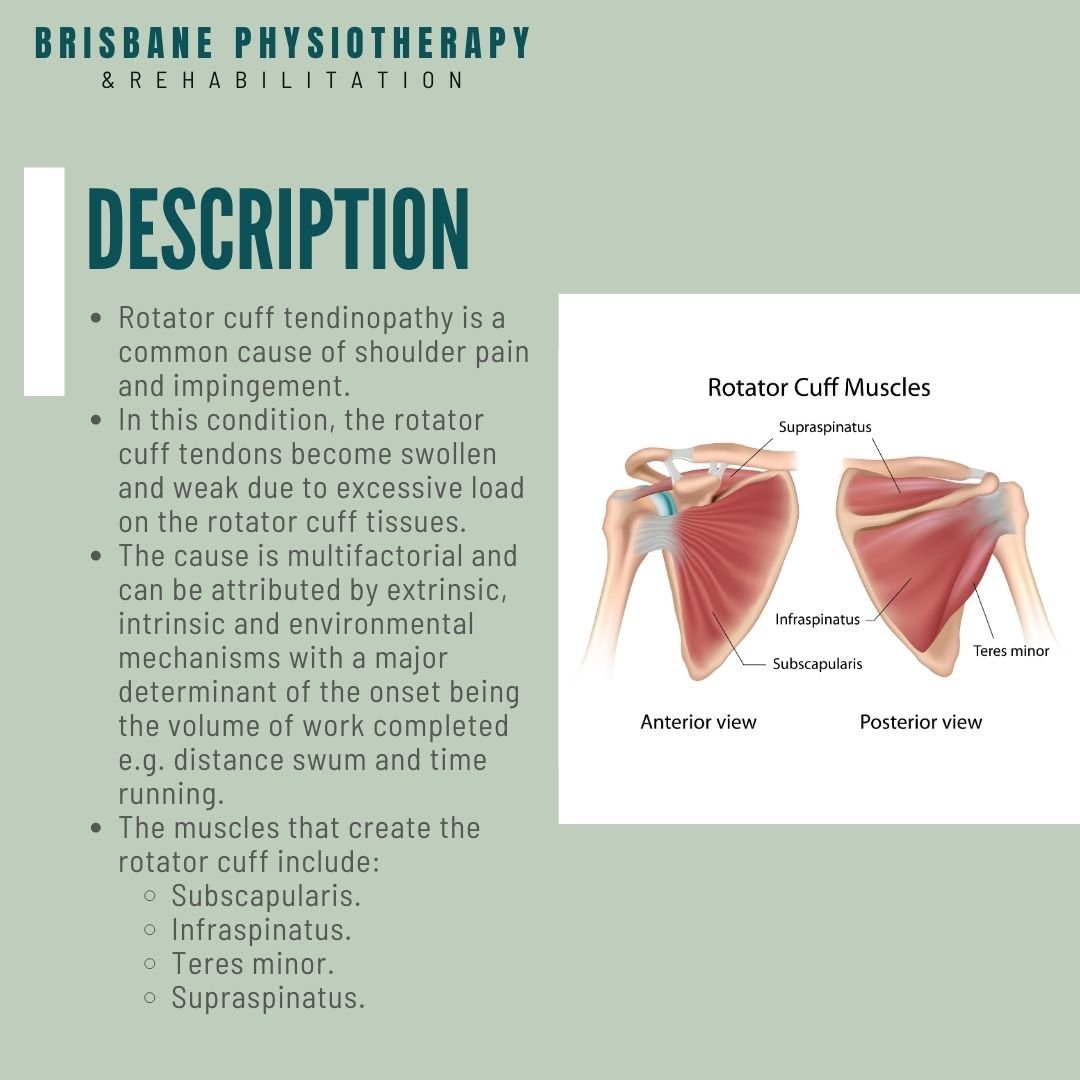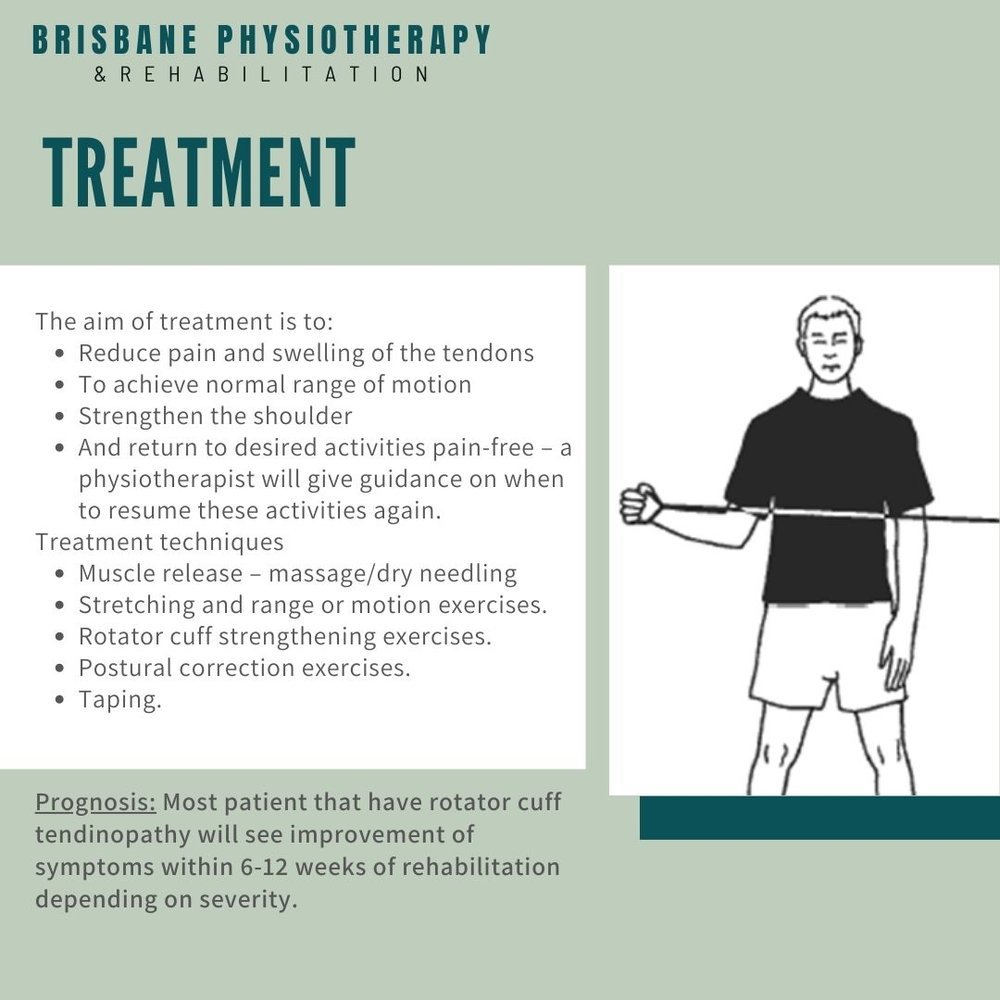Rotator Cuff
What is the Rotator Cuff?
The rotator cuff is a group of four essential muscles and their tendons that envelop and stabilize the shoulder joint. This intricate network of tissues plays a vital role in shoulder function, providing both mobility and stability to this highly versatile joint. Understanding the rotator cuff's anatomy and function is key to appreciating its significance in our daily activities.
Anatomy of the Rotator Cuff:
The rotator cuff comprises four muscles and their tendons:
Supraspinatus: Located on the top of the shoulder blade, this muscle aids in lifting the arm and initiating abduction (raising the arm away from the body).
Infraspinatus: Positioned on the back of the shoulder blade, it facilitates external rotation (turning the arm outward) and assists in abduction.
Teres Minor: Located beneath the infraspinatus, this muscle also contributes to external rotation.
Subscapularis: Positioned on the front of the shoulder blade, it facilitates internal rotation (turning the arm inward) and helps hold the humeral head (arm bone) in the shoulder socket.
Function of the Rotator Cuff:
The rotator cuff serves several crucial functions, including:
Stabilization: It maintains the position of the humeral head within the shallow glenoid socket, preventing dislocation.
Mobility: The muscles allow for a wide range of shoulder movements, including lifting, reaching, and rotating the arm.
Dynamic Control: These muscles provide dynamic stability during activities like lifting heavy objects or throwing.
Common Rotator Cuff Issues:
Several common issues can affect the rotator cuff:
Rotator Cuff Tears: Partial or complete tears in one or more of the rotator cuff tendons, often due to injury, overuse, or age-related degeneration.
Tendonitis: Inflammation of the rotator cuff tendons, leading to pain and limited mobility.
Impingement: Occurs when the tendons are compressed or pinched, causing pain, particularly during arm movements.
Rotator Cuff Tendinosis: A chronic degeneration of the rotator cuff tendons without significant inflammation, resulting in pain and reduced function.
Rotator Cuff Tendinopathy
Rotator Cuff Tendinopathy Description
Rotator cuff tendinopathy is a common cause of shoulder pain and impingement.
In this condition, the rotator cuff tendons become swollen and weak due to excessive load on the rotator cuff tissues.
The cause is multifactorial and can be attributed by extrinsic, intrinsic and environmental mechanisms with a major determinant of the onset being the volume of work completed e.g. distance swum and time running).
Rotator Cuff Tendinopathy Presentation
Pain is typically dull and has a slow, gradual onset.
The location of symptoms is in the area of the rotator cuff tendons and tenderness located in the shoulder joint.
Rotator cuff tendinopathy is a common cause of shoulder pain and impingement. - In this condition, the rotator cuff tendons become swollen and weak due to excessive load on the rotator cuff tissues.
Associated with the pain is a growing weakness of the shoulder.
Aggravating activities include overhead reaching, reaching behind the back, lifting and sleeping on the affected side.
Athletes may complain of pain with overhead activity such as throwing, swimming and overhead shot in racquet sports.
Activities performed underarm below 90 degrees are usually pain-free.
A history of recurrent subluxation or episodes of ‘dead arm’ may also be associated.
Rotator Cuff Tendinopathy Treatment
The aim of treatment is to:
Reduce pain and swelling of the tendons
To achieve normal range of motion
Strengthen the shoulder
And return to the patients desired activities pain-free – a physiotherapist will guide patients on when to resume these activities again.
Treatment techniques:
Muscle release – massage/dry needling
Stretching and range or motion exercises.
Rotator cuff strengthening exercises.
Postural correction exercises.
Taping.
Prognosis:
Most patient that have rotator cuff tendinitis will see improvement of symptoms within 6-12 weeks of rehabilitation depending on severity.
Rotator Cuff Reconstruction
Rotator cuff reconstruction is a surgical procedure designed to repair a torn rotator cuff in the shoulder. The rotator cuff is a group of muscles and tendons that surround the shoulder joint, providing stability and enabling a wide range of motion. When the rotator cuff is torn, either partially or completely, it can result in pain, weakness, and limited function of the shoulder.
Indications for rotator cuff reconstruction include severe rotator cuff tears that do not respond to conservative treatments including physiotherapy, rest, and medication. Additionally, individuals who experience persistent pain and weakness despite non-surgical interventions may also be candidates for surgery. Other factors such as the size and location of the tear, as well as the patient's age and activity level, are taken into consideration when determining the need for surgery.
Physio after a Rotator Cuff Reconstruction
Prior to rotator cuff reconstruction, patients typically undergo a period of pre-operative physiotherapy. The goals of pre-operative physiotherapy are to reduce pain, improve range of motion, and strengthen the muscles surrounding the shoulder joint. This helps to optimise the condition of the shoulder before surgery and can improve outcomes post-operatively. Pre-operative physiotherapy may involve exercises including shoulder strengthening exercises, as well as stretching and range of motion exercises.
Post-operative physiotherapy is a crucial component of the recovery process following rotator cuff reconstruction. The goals of post-operative physiotherapy are to promote healing, restore range of motion, and regain strength and function of the shoulder. Initially, the focus is on protecting the repaired rotator cuff while allowing it to heal. This may involve wearing a sling, avoiding activities that place stress on the shoulder and commencing early mobilisation under guidance of a physiotherapist.
As healing progresses, physiotherapy exercises are gradually advanced to improve greater ranges of motion and strength. These exercises may include passive and active range of motion exercises, strengthening exercises targeting the rotator cuff and surrounding muscles, and functional exercises to improve shoulder stability and coordination. The specific exercises and progression of rehabilitation will vary depending on the individual patient's needs and the surgeon's recommendations.
In addition to supervised physiotherapy sessions, patients are typically prescribed a home exercise program to continue their rehabilitation between sessions. Compliance with the home exercise program is important for achieving optimal outcomes following rotator cuff reconstruction.
Conclusion
Overall, rotator cuff reconstruction is a complex surgical procedure that requires comprehensive pre-operative preparation and post-operative rehabilitation to achieve successful outcomes. Physiotherapy plays a critical role in both the preoperative optimisation and post-operative recovery of patients undergoing rotator cuff reconstruction. Through a combination of hands-on therapy and guided exercises, physiotherapists help patients regain function and return to their daily activities following surgery. If you have gone through or are looking at having rotator cuff reconstruction completed, our physiotherapists at Brisbane Physiotherapy can help!




